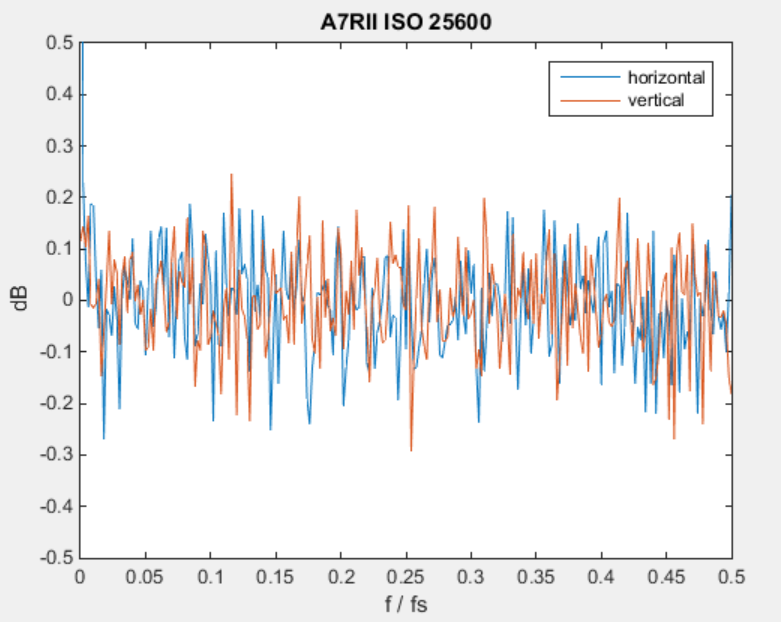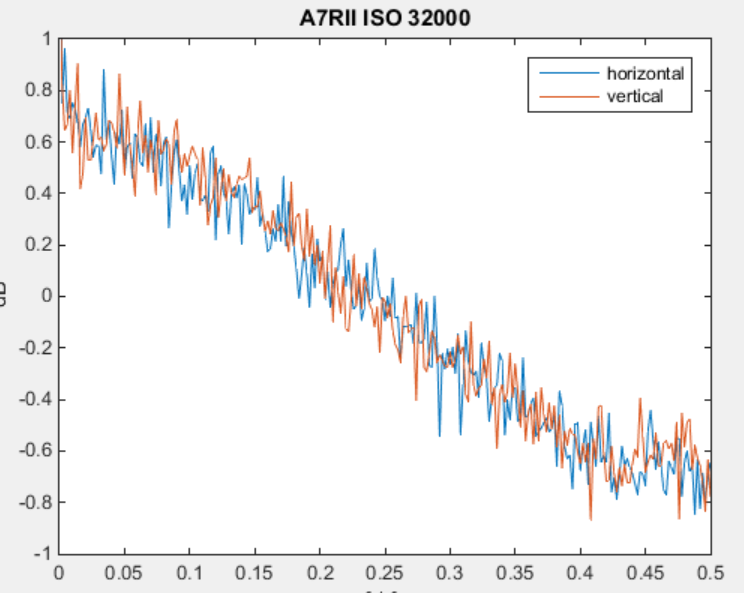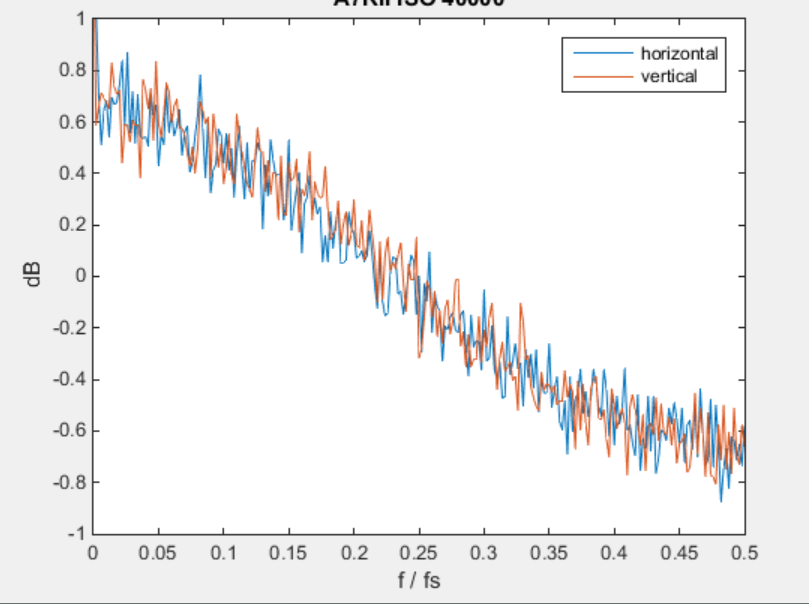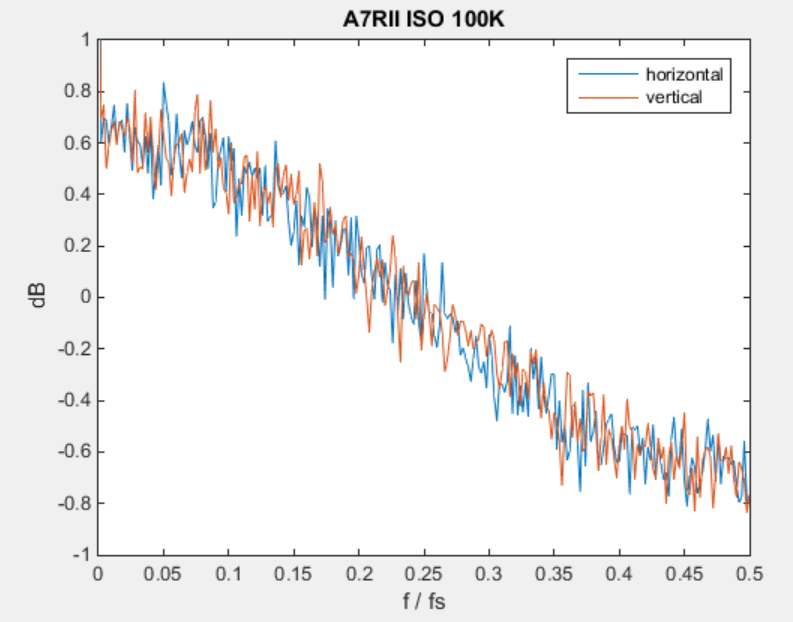Earlier, we saw indications that the Sony a7RII was doing spatial filtering of raw images at ISO 32000 and above.
In such situations, I find it instructive to look at spatial frequency graphs. Assuming that some of you do as well, here is a graph of the horizontal and vertical spectra of a 1000×1000 pixel patch in the green channel of a single shot shutter image at ISO 25600:
If the read noise is Gaussian, it should be white, and it is.
Now let’s look at what happens when we increase the ISO to 32000:
Note that I had to change the vertical scale to fit the curve in. The horizontal axis is spatial frequency as a fraction of the sampling frequency. Anything above half the sampling frequency is aliased, so the graph stops there. This is a lowpass filtering of the read noise with peak attenuation of about 2 decibels. Not a strong filter, but a filter nonetheless.
If we turn the ISO up a third of a stop, things don’t change materially:
Nor do they all the way at the highest ISO the camera can handle:
This is not good news for uninformed raw shooters, although it could help the OOC JPEGs. I wouldn’t turn the ISO up beyond 25600 if I were shooting raws. Actually, I probably wouldn’t turn it up past 1600, but that’s just me.




None of the cases you deal with involves ISO 1600. So I am mystified why you offer your conclusion about avoiding photographing above 1600. Would you please explain. This seems to come out of the blue.
1600 plus a three stop push in post gives the equivalent of 12800 with no push. I don’t photograph things in light so dim that that’s not more than enough. YMMV.
Nice straightforward post where I learned something both useful and informative. While I’m holding out the next version of the RX1 (for my shooting purposes), this is of interest to friends of mine who are considering the A7rII. Thanks, Jim!
Im curious to know why is it that low light performance is so much better in crop mode when shooting video. Maybe you could shed light on? Thanks!
I don’t plan to use this camera in video mode, at least for now. I don’t expect to be testing the video features.
Sorry.
Jim
The specs on dpreview say that the base ISO range of the camera is ISO 100 to 25600, expandable to 50 to 102400. So if you go beyond 25600 that it’s clear that some software postprocessing happens. If someone doesn’t like Sony’s take at postprocessing, as you say ISO 25600 is the way to go – you’ll get the “real” raw data before it was pushed in-camera.
D’accord.